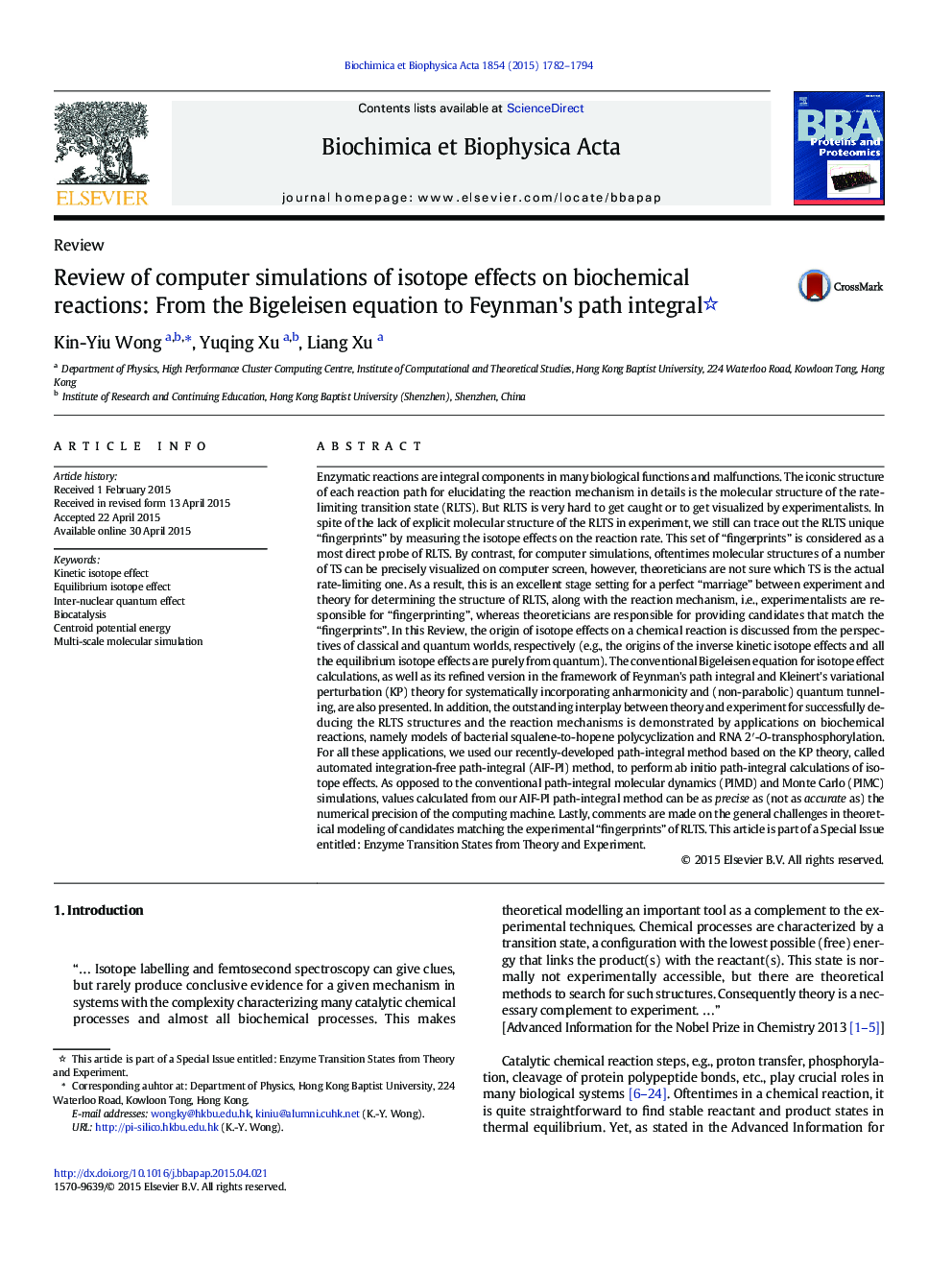| کد مقاله | کد نشریه | سال انتشار | مقاله انگلیسی | نسخه تمام متن |
|---|---|---|---|---|
| 1178285 | 962679 | 2015 | 13 صفحه PDF | دانلود رایگان |
• The origins of the inverse KIE and all EIE on reactions are purely from quantum.
• Our AIF-PI path-integral method systematically goes beyond the Bigeleisen equation.
• Our AIF-PI method systematically incorporates anharmonicity and tunneling.
• Values calculated from our AIF-PI method are more precise than PIMC & PIMD.
• Biochemical applications on series of proton-transfer and RNA reactions are given.
Enzymatic reactions are integral components in many biological functions and malfunctions. The iconic structure of each reaction path for elucidating the reaction mechanism in details is the molecular structure of the rate-limiting transition state (RLTS). But RLTS is very hard to get caught or to get visualized by experimentalists. In spite of the lack of explicit molecular structure of the RLTS in experiment, we still can trace out the RLTS unique “fingerprints” by measuring the isotope effects on the reaction rate. This set of “fingerprints” is considered as a most direct probe of RLTS. By contrast, for computer simulations, oftentimes molecular structures of a number of TS can be precisely visualized on computer screen, however, theoreticians are not sure which TS is the actual rate-limiting one. As a result, this is an excellent stage setting for a perfect “marriage” between experiment and theory for determining the structure of RLTS, along with the reaction mechanism, i.e., experimentalists are responsible for “fingerprinting”, whereas theoreticians are responsible for providing candidates that match the “fingerprints”. In this Review, the origin of isotope effects on a chemical reaction is discussed from the perspectives of classical and quantum worlds, respectively (e.g., the origins of the inverse kinetic isotope effects and all the equilibrium isotope effects are purely from quantum). The conventional Bigeleisen equation for isotope effect calculations, as well as its refined version in the framework of Feynman's path integral and Kleinert's variational perturbation (KP) theory for systematically incorporating anharmonicity and (non-parabolic) quantum tunneling, are also presented. In addition, the outstanding interplay between theory and experiment for successfully deducing the RLTS structures and the reaction mechanisms is demonstrated by applications on biochemical reactions, namely models of bacterial squalene-to-hopene polycyclization and RNA 2′-O-transphosphorylation. For all these applications, we used our recently-developed path-integral method based on the KP theory, called automated integration-free path-integral (AIF-PI) method, to perform ab initio path-integral calculations of isotope effects. As opposed to the conventional path-integral molecular dynamics (PIMD) and Monte Carlo (PIMC) simulations, values calculated from our AIF-PI path-integral method can be as precise as (not as accurate as) the numerical precision of the computing machine. Lastly, comments are made on the general challenges in theoretical modeling of candidates matching the experimental “fingerprints” of RLTS. This article is part of a Special Issue entitled: Enzyme Transition States from Theory and Experiment.
Journal: Biochimica et Biophysica Acta (BBA) - Proteins and Proteomics - Volume 1854, Issue 11, November 2015, Pages 1782–1794
